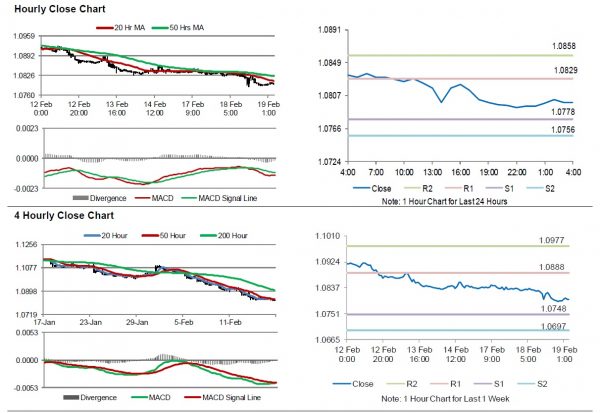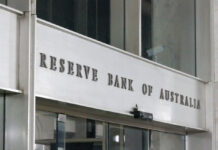For the 24 hours to 23:00 GMT, the EUR declined 0.39% against the USD and closed at 1.0794, after the ZEW survey showed a slump in confidence among German investors.
Data indicated that Germany’s ZEW economic sentiment indicator fell to a level of 8.7 in February, on coronavirus concerns and marking its weakest level since November. In the previous month, the index had recorded a reading of 26.7. Additionally, the ZEW current situation declined more-than-expected to -15.7 in February, compared to a reading of -9.5 in the previous month. Moreover, Eurozone’s ZEW economic sentiment index unexpectedly dropped to 10.4 in February, compared to a level of 25.6 in the prior month.
In the US, the NAHB house price index eased to 74.0 in February, compared to 75.0 in the previous month. On the other hand, the NY Empire State manufacturing index climbed to 12.9 in February, notching its highest level in nine months and compared to a reading of 4.8 in the earlier month.
In the Asian session, at GMT0400, the pair is trading at 1.0799, with the EUR trading 0.05% higher against the USD from yesterday’s close.
The pair is expected to find support at 1.0778, and a fall through could take it to the next support level of 1.0756. The pair is expected to find its first resistance at 1.0829, and a rise through could take it to the next resistance level of 1.0858.
Looking ahead, traders would keep a close watch on Euro-zone’s current account balance and construction output, both for December, slated to release in a few hours. Later in the day, traders would focus on the US FOMC meeting minutes for cues on the central bank’s near-term monetary policy intentions. Moreover, the release of US producer price index, building permits, housing starts, all for January, along with the MBA mortgage applications will keep investors on their toes.
The currency pair is trading below its 20 Hr and 50 Hr moving averages.














